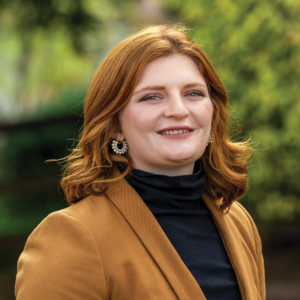- Launched Animal Care Version 5
- Launched Workforce Development Version 2
- Provided Biosecurity best practice amidst H5N1 Outbreak
The National Dairy Farmers Assuring Responsible Management (FARM) Program’s commitment to continuous improvement has shown throughout the year. Updated versions of its Animal Care, Workforce Development, and Environmental Stewardship program areas are advancing its commitment to sharing dairy’s positive social responsibility story. The program also turned its attention to supporting farmers as they navigated the H5N1 outbreak, an immediate crisis that may become a long-term effort.
FARM Animal Care Version 5 released updates July 1 focusing on best practices for calf disbudding, colostrum management, and pre-weaned calf care. Euthanasia and fitness to transport for all age classes rounded out the latest updates. The changes came after a two-year review and revision period that included input from FARM’s Farmer Advisory Council and Animal Care Task Force, along with NMPF’s Animal Health and Well-Being Committee. Since launching, 448 Version 5 evaluations have been completed by 72 participant cooperatives and processors.
FARM Workforce Development Version 2 also debuted in July, with updates focused on improving the evaluation tool used on-farm to assess human resource management and safety best practices. Seven questions were added to strengthen the tool’s coverage of communication and performance management.
FARM Environmental Stewardship Version 3 will integrate the Ruminant Farm Systems (RuFaS) model, as the new engine behind the tool. This model incorporates updated science and the ability to run what-if scenarios to assess practice and technology options. results. The updated platform offers flexibility, with the choice to enter minimum data inputs like Version 2 and optional data inputs – like details on crop production practices – for more tailored results. This upgrade will support industry efforts to be greenhouse gas-neutral by 2050 and respond to growing customer requests.
While FARM Program updates have been implemented, FARM Biosecurity proved essential in helping guide dairy farmers through a real-time biosecurity threat – the presence of H5N1 virus in dairy cattle. FARM provided timely, accurate information and industry-leading resources as the first cases of H5N1 appeared in U.S. dairy cattle.
NMPF’s Chief Science Officer. Dr. Jamie Jonker, served as a leading industry expert and spokesperson shortly after the first USDA confirmation of H5N1 in Texas dairy cattle on March 25. Jonker also led an April 1 NMPF member and FARM participant webinar on the topic that also featured Dr. Mark Lyons from USDA and Dr. Fred Gingrich from the American Association of Bovine Practitioners, giving the latest information on the fast-moving situation. The webinar attracted 1,380 registrants and began an ongoing industry education effort.
Dairy producers and cooperatives can enroll in FARM Biosecurity- Enhanced training to learn the basics of developing an enhanced biosecurity plan. Additionally, there is a suite of resources such as the Biosecurity Prep Guide, User Guide for the FARM Biosecurity database, map checklist, and video tutorials for those interested.
Also highlighting the first half of 2024, FARM held its annual Evaluator Conference July 22-24 in Lexington, KY for FARM Program Evaluators to connect, learn about recent program updates and hear from allied industry subject matter experts. The first in-person Evaluator Conference since 2021 featured 50 evaluators and 29 organizations and was sponsored by Alltech, which also provided an evening reception and distillery tour. Participants heard from industry professionals on assorted topics surrounding the Animal Care, Environmental Stewardship, Biosecurity and Workforce Development program areas.

 By Miquela Hanselman
By Miquela Hanselman 



